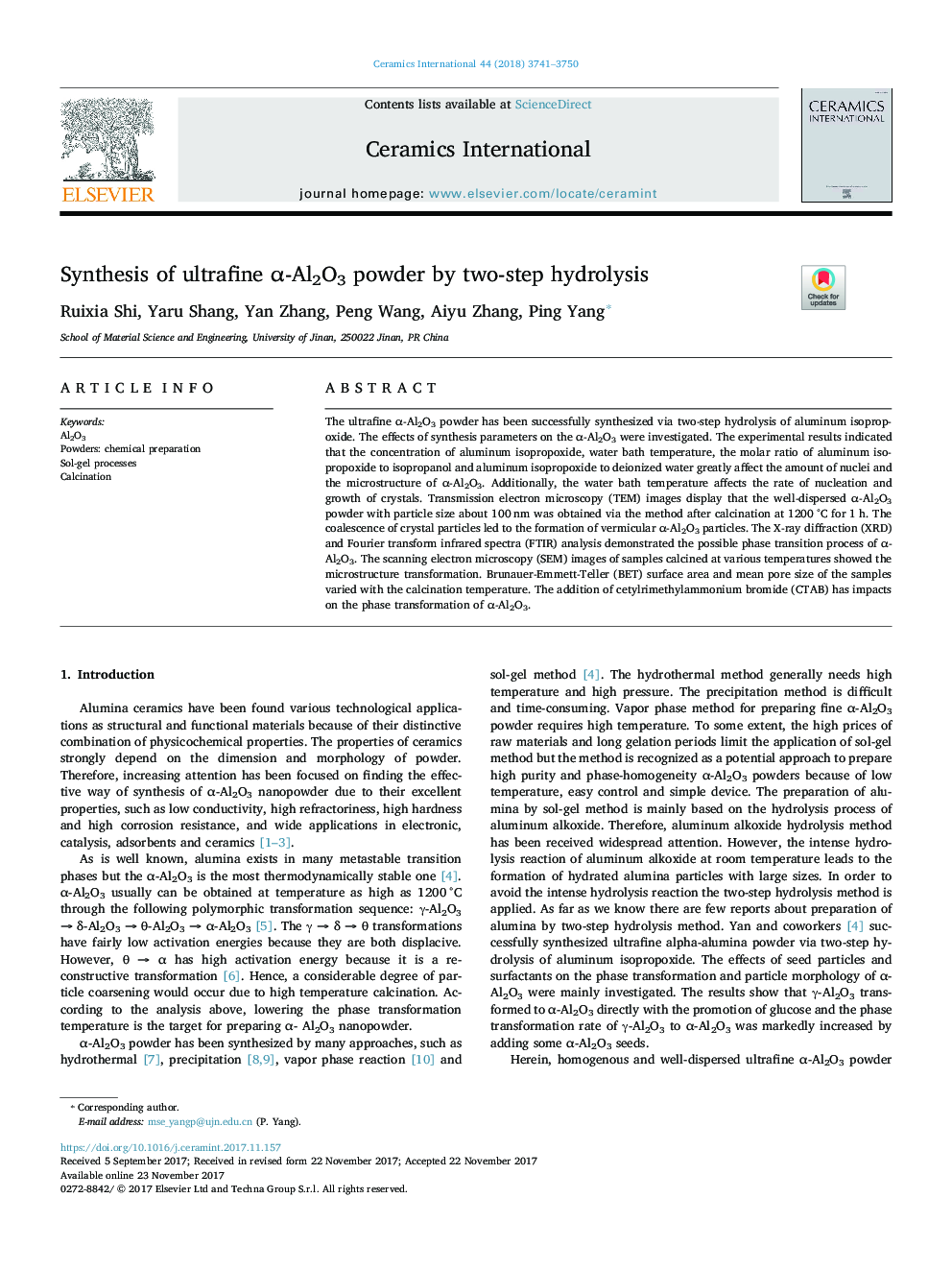| Article ID | Journal | Published Year | Pages | File Type |
|---|---|---|---|---|
| 7888189 | Ceramics International | 2018 | 10 Pages |
Abstract
The ultrafine α-Al2O3 powder has been successfully synthesized via two-step hydrolysis of aluminum isopropoxide. The effects of synthesis parameters on the α-Al2O3 were investigated. The experimental results indicated that the concentration of aluminum isopropoxide, water bath temperature, the molar ratio of aluminum isopropoxide to isopropanol and aluminum isopropoxide to deionized water greatly affect the amount of nuclei and the microstructure of α-Al2O3. Additionally, the water bath temperature affects the rate of nucleation and growth of crystals. Transmission electron microscopy (TEM) images display that the well-dispersed α-Al2O3 powder with particle size about 100 nm was obtained via the method after calcination at 1200 °C for 1 h. The coalescence of crystal particles led to the formation of vermicular α-Al2O3 particles. The X-ray diffraction (XRD) and Fourier transform infrared spectra (FTIR) analysis demonstrated the possible phase transition process of α-Al2O3. The scanning electron microscopy (SEM) images of samples calcined at various temperatures showed the microstructure transformation. Brunauer-Emmett-Teller (BET) surface area and mean pore size of the samples varied with the calcination temperature. The addition of cetylrimethylammonium bromide (CTAB) has impacts on the phase transformation of α-Al2O3.
Related Topics
Physical Sciences and Engineering
Materials Science
Ceramics and Composites
Authors
Ruixia Shi, Yaru Shang, Yan Zhang, Peng Wang, Aiyu Zhang, Ping Yang,
